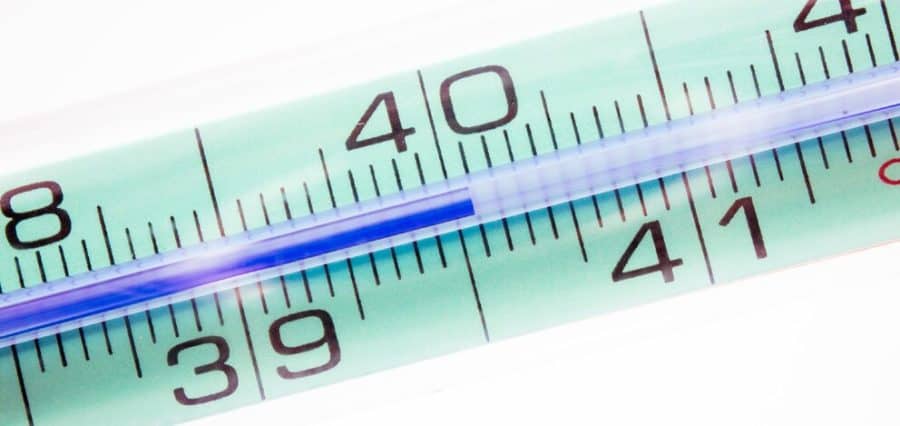A newly described gene allows the malaria parasite to defend itself from adverse conditions, such as the high temperatures of fever that are the classic clinical symptom of human infection. A study led by the Barcelona Institute for Global Health (ISGlobal) in collaboration with investigators at Penn State describes how the gene activates a protective response and resolves a long-standing question on how the parasite responds to changes in its environment.
A paper describing the study appeared Aug. 16 in the journal Nature Microbiology.
“Identifying genes that are critical regulators of malaria parasite development and their ability to respond to their host environment allows us to define new drug targets that are critically needed to combat this global infectious disease,” said Manuel Llinás, professor of biochemistry and molecular biology and of chemistry at Penn State and an author of the paper.
Every year malaria afflicts over 200 million people worldwide resulting in half a million annual deaths, largely of children under the age of 5. Infection by Plasmodium falciparum, a parasite that causes one of the most severe forms of malaria in humans, is characterized by periodic fevers. These fevers correspond to the parasite’s cyclical rounds of asexual reproduction, which culminate in large numbers of parasites being released into the blood stream.
Fever is an important element in our body’s response to pathogens. It affects the stability of cellular proteins in the pathogens and helps reduce parasite burden. In turn, most organisms have a defense mechanism against increased temperatures: the expression of heat-shock proteins (HSP), which act as chaperones to help stabilize other proteins.
“In most of the eukaryotic organisms, from yeasts to mammals, the expression of these proteins depends on a highly conserved transcription factor called HSF1,” said Alfred Cortés, ICREA researcher at ISGlobal and the study’s coordinator. “However, malaria parasites, which are also eukaryotes, lack the HSF1 gene, although we know that they can survive at febrile temperatures.”
In this study, the research team set out to investigate how the malaria parasite regulates its response to higher temperatures (or heat shock) despite the absence of HSF1. They observed that a P. falciparum cell line grown in the laboratory had lost its capacity to survive when exposed to a temperature of 41.5 degrees Celsius (nearly 107 degrees Fahrenheit!), and that this was due to a mutation in a gene which they named PfAP2-HS.
PfAP2-HS encodes a transcription factor, a protein that regulates the expression of other genes by interacting with DNA. To determine which genes are regulated by PfAP2-HS, T.J. Russell in the Llinás lab at Penn State used chromatin immunoprecipitation coupled with next generation DNA sequencing (ChIP-seq).
“With ChIP-seq we can identify where PfAP2-HS binds to the P. falciparum genome,” said Russell, a graduate student in biochemistry and molecular biology at Penn State and co-author of the paper. “Identifying the genes PfAP2-HS binds closest to provides a direct link between PfAP2-HS and specific gene regulation.”
Their results demonstrate that PfAP2-HS activates the expression of heat shock proteins hsp70-1 and hsp90 by binding to their respective promoters—the “on-off buttons” of a gene—at both fever and non-fever body temperature. In accordance with this finding, they showed that engineered parasites lacking the PfAP2-HS gene not only had a lower survival rate when exposed to higher temperatures, but also showed reduced growth at “normal” temperatures of 37 degrees Celsius (98.6 degrees Fahrenheit).
“This means that, in addition to its role in the protective heat-shock response, PfAP2-HS is also important for maintaining protein stability in the parasite at basal temperatures,” says Elisabet Tintó-Font, researcher at ISGlobal and first author of the study.
Moreover, the research team showed that absence of PfAP2-HS in P. falciparum led to a higher susceptibility of the parasite to the antimalarial drug “artemisinin,” due to alterations in protein balance.
The research team also found versions of the PfAP2-HS gene in all Plasmodium species that they analyzed, even in those that infect mice and do not cause fever.
“This suggests that, at least in those species, the response orchestrated by AP2-HS could protect against other adverse conditions in the host,” said Cortés. “This is the first transcription factor described in Plasmodium capable of regulating responses to adverse host conditions, including fever. PfAP2-HS acts as ‘an orchestra director’, coordinating the other proteins involved in the response.”
In addition to Llinás, who is co-director of the Huck Center for Malaria Research at Penn State, Cortés, Russell, and Tintó-Font the research team includes Lucas Michel-Todó and Núria Casas-Vila at ISGlobal, David J. Conway at the London School of Hygiene and Tropical Medicine, and Zbynek Bozdech at Nanyang Technological University in Singapore. The research was funded by the Spanish Ministry of Economy and Competitiveness/Agencia
Estatal de Investigación the European Regional Development Fund (European Union), and the U.S. National Institutes of Health/National Institute of Allergy and Infectious Disease.


